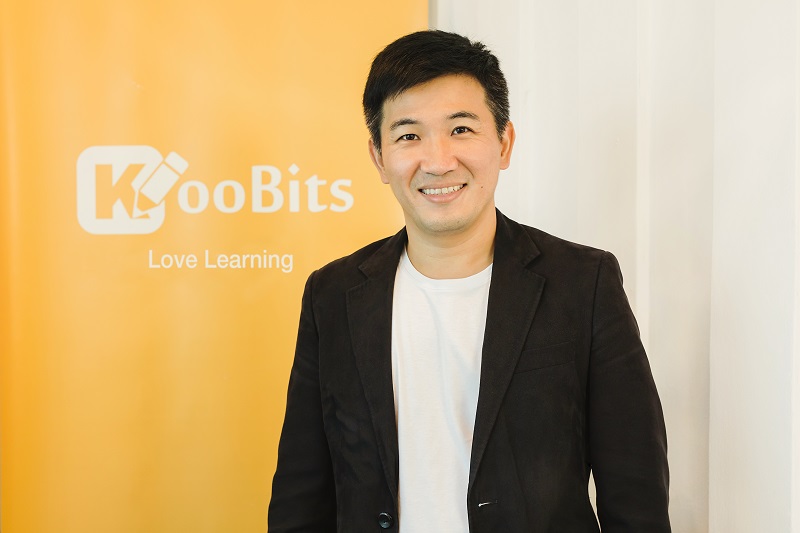Amidst the COVID-19 pandemic, many tuition and coaching centers were forced to shut down or switch to online avenues overnight. Many tuition centers started online classes using video telephony and online chat services and managed to survive somehow.
However, in the long run, without a robust content delivery platform that can consolidate, streamline and organize tasks, these methods are hard to sustain, and take away from what should be the main focus of education: the interaction between teachers and students.
SMEhorizon talks to Stanley Han, Founder and CEO of KooBits, and Lee Meng Hui, Principal, Yen’s Academy, on the digitalisation of the tuition industry, how COVID-19 has affected it, and what are the future prospects for this sector.
Engagement and digitalization in the tuition industry

When asked what attracted him to the education sector, Han pointed out that his engineering background drew him naturally to building things to solve problems “I noticed a gap between how technology is used inside schools, vs. how technology is used in the consumer market. On one hand, teachers and students use very engaging consumer apps that handle many of their daily routines, but yet when it comes to schools, both teachers and students are using something very manual and cumbersome. I saw that as a great opportunity for innovation: to create a tech solution that students would find engaging, and would be self-motivated to use, the way they would use other consumer apps. “
While engagement is a big concern for the tuition industry, digital methods to achieve this were relatively less used. “I don’t think the tuition industry embraced e-learning in a big way before COVID-19,” says Han. “Most were comfortable in the brick-and-mortar business model. We had 180, 000 subscribers from 360 schools in the region, with about 80 schools in Singapore.”
KooBits partner Yen’s Academy exemplifies this. As a tuition center in Bishan whose motto is “Where Learning is FUN”, engagement is important to their approach. Shares Lee, “Besides the usual learning notes and worksheets, we often include fun activities and discussions to engage our students so that they can learn more effectively and efficiently. We organized events for our students’ parents too, such as “Ignite! Learning Festival” and “Bring your parents to class” day. Together with some of our upper primary students, we also hosted about 40 students from two schools from Thailand.”

Digitally, they have been piloting KooBits for their primary Math classes since 2018. “We were using NewsEd, a digital library by SPH, which enabled our upper primary and secondary students to read news articles. We have also been Kahoot to conduct math and science quizzes for our students.”
Learning in a pandemic
The challenges faced by centers seeking to digitalize were accentuated during the pandemic. Han points out the lack of dedicated tools as one challenge. “While a lot of tuition centers began embracing online classes using Zoom when the Circuit Breaker began, they were impeded by the lack of a good content delivery platform.
“How do tutors assign work after the Zoom class? Continually emailing parents the PDF files is a clumsy process. How would a child answer — would parents have to print out the PDFs, scan them, and send them back? How can tutors collect all the answers from all the students into one report? All these tasks require a good content delivery and data analysis platform. That’s what KooBits Class is offering to tuition centers and schools, instantly equipping them with such capabilities.”

Echoing his sentiments, Lee shares that “Like all learning centers in Singapore, we were not able to conduct physical lessons starting from 27th March. We migrated all our classes online via Zoom from end-March to end-July. We only started physical lessons again in early August.”
“Using KooBits enables our tutors to teach and assign work to our students more effectively. The detailed progress reports allow us to monitor the progress of our students closely though we do not get to meet them in person during the Circuit Breaker period. The function which enables us to create and assign customized worksheets also allows us to support our students individually based on each of their strengths and weaknesses.” These measures have been well-received by tutors, students and parents.
Schools as an equalizing force
Many have pointed out that in online learning, students from lower income backgrounds may not have the hardware to access learning resources. Han believes this can be addressed through schools. “School is definitely an equalizing force. Schools have computer labs and they can tap into government funding to provide the infrastructure for their students. That’s why we started with marketing to schools so that we can create more social impact, especially for students from lower income families.”
The future of tuition
Han suggests that COVID-19 will likely make the entire tuition market consolidate. ”Tuition centers who embrace technology and adopt online learning capability will likely get more business and will grow bigger. And, those who still rely on foot traffic will likely see uneven or unpredictable income streams, and will face greater cashflow challenges.
For Yen’s Academy, these technologies look set in place for the long term. Shares Lee, “These technologies reduce the time required by our tutors to prepare learning material and marking of worksheets. The data collected and provided by these learning systems also allow us to monitor students’ progress more effectively.”
Moving forward, KooBits is looking beyond our shores. “We started experimenting with entering the overseas market in 2017, and we made big headway into the Philippines and Indonesia market in 2018,” shares Han. “Since 2019, our overseas business overtook our Singapore business and will definitely have more room to grow in the future.”














